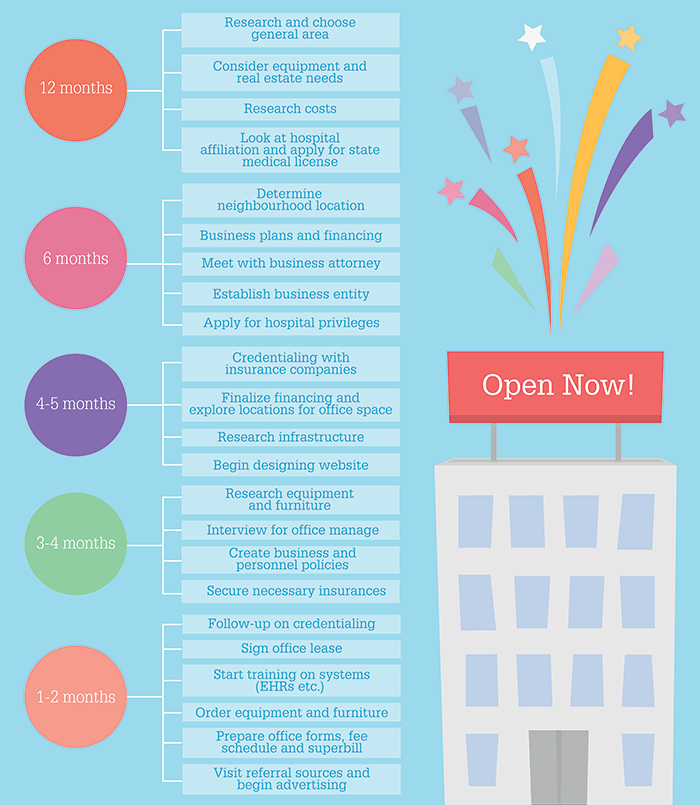
Ravi Patel
Co-founder of Florida Eye Specialists. Specializes in cataract, laser refractive and corneal surgery. “Don’t stress the small stuff and you can do it!” My practice has grown hugely since starting out. Originally, I started out in 2009 as a solo practitioner with 2,500 square foot of office space and six staff members, but this has since meta-morphed into a group practice with multiple locations and a large number of staff. In the beginning, the challenge of managing HR was quite a surprise – and this continues to be a challenge today. I was also surprised by the costs of equipment and instruments. It’s been so rewarding to grow the practice and see it develop a good reputation amongst the community and with patients. I’ve really enjoyed caring for my patients and being able to provide the best patient experience possible – it’s been so great to hear positive comments and receive heart-felt cards.- Many may believe that it is too difficult to set up an independent practice nowadays
- Whilst true that it isn’t easy, we believe that it absolutely is possible to set up a solo practice in the 21st Century
- We should know: we’ve each been successful at setting up our own clinics
- We share our stories, provide our top tips for going solo, and reflect on the lessons we’ve learnt
Conventional wisdom suggests that setting up a solo practice is a thing of the past. And it’s true that “hanging a shingle” – where you could go anywhere, work hard and see things go well – doesn’t really apply nowadays, because a lot more planning is required. There is also a common belief that it’s too difficult unless you address an underserved area. But we would counter that starting-up in a thriving area isn’t impossible. We’ve each succeeded in Atlanta, Jacksonville and San Diego, and we want to share and reflect on some of the lessons we’ve learned along the way…
Plan it
Planning is by far the most important step and should start at least 12 months from your anticipated opening day (Figure 1). The first big decision facing the budding solo practitioner is: where do you want your practice to be? Location is critical, so whether you’re aiming for a big city, suburban or rural practice, it’s key to look into the local demographics. MD to population ratio and the number of local optometrists are also things you can consider, but it doesn’t always matter if there isn’t a huge demand for eyecare: you just have to plan around it.You do need to decide what eyecare you want to deliver: an underprivileged area may not be the best place for LASIK – and up and coming “hipster” areas aren’t ideal if you want to perform lots of cataract surgery. It’s also important to consider the insurance distribution of the area. Although getting the information you need can be difficult, talking to local physicians in the area can help you get the “lay of the land” in terms of patients and insurance.

Once you’ve got the wider area mapped out, you need to pin down your site. Do you want a medical office or retail location? Each has their pros and cons: medical offices offer opportunities to build up and may be more accessible to referrals, but you may not get the foot traffic or visibility of a retail-type location. Accessibility is also a factor – if you’re not familiar with the local area, it’s worth talking to people to find any trouble spots that patients may avoid traveling to because of traffic or parking issues. Once you’ve got a location sorted, it’s time to think about what you’re going to need to build your practice.
Ravi Patel
Co-founder of Florida Eye Specialists. Specializes in cataract, laser refractive and corneal surgery. “Don’t stress the small stuff and you can do it!” My practice has grown hugely since starting out. Originally, I started out in 2009 as a solo practitioner with 2,500 square foot of office space and six staff members, but this has since meta-morphed into a group practice with multiple locations and a large number of staff. In the beginning, the challenge of managing HR was quite a surprise – and this continues to be a challenge today. I was also surprised by the costs of equipment and instruments. It’s been so rewarding to grow the practice and see it develop a good reputation amongst the community and with patients. I’ve really enjoyed caring for my patients and being able to provide the best patient experience possible – it’s been so great to hear positive comments and receive heart-felt cards.
Build it
What you want in your office depends on your practice vision. What kind of physician do you want to be and what you want to do? There are several aspects to consider, such as:- How many exams rooms do you need? Make sure you’re going to make each square foot of what you take useful. A lot of people forget about circulation space (areas where patients walk, ends of halls, and so on) but these are still important aspects of your office, and can account for 25–30 percent of your square footage.
- What equipment do you really need? Many of us may have trained on elite equipment, but do you really need it? As equipment usually turns out to be more expensive than expected, pick and choose where you may be happier to go for the cheaper option; looking at reimbursement rates may assist these decisions as you can calculate how long it may take you to pay off equipment purchases.
- Do you want ancillary testing on- site, and if so, how much? Not only is ancillary testing “dead” square footage when you’re not actually using it, but the machines can be very expensive. It’s worth investigating opportunities for ancillary testing in your local area, for instance at ambulatory surgery centers (ASCs).
- Some square footage is optional. Do you really need your own office? If there’s a public bathroom in your building, do you really need your own (and the additional costs of maintenance)?
Ajit Nemi
Solo practitioner specializing in cataract and refractive surgery, and comprehensive eye care. “It was a leap of faith, but I’m glad I took it.” I’d previously been working in a group practice but, realizing that it wasn’t a good fit for me, I was inspired to set up my own clinic. In 2008, right at the beginning of the USA’s most recent recession and as the stock and housing market were crashing, I started my practice. It then took a whole year to obtain any reimbursement from Medicare because it turned out that the electronic billing system was entering zip codes in a different format to what the Center for Medicaid and Medicare Services (CMS) accepted! Although this was a bad surprise that took a year of back and forth over the telephone to sort out, I’ve encountered many good surprises along the road. Word of mouth from our patients has had an exponential effect on our practice, and there’ve been many rewards, some of the biggest ones being the ability to execute my vision for practicing medicine, having autonomy over the practice culture, as well as the personal satisfaction of growing a business from “scratch.” In the years to come, I hope to continue to grow and mature my practice.
Finance it
Moolah, dough, bucks – whatever you call it, none of this would be possible without it. A question we’re always asked is “How much will it cost me to open my own practice?” Talking specific numbers is not always helpful – insurance contracts and office expenses vary so wildly by geography that it is important for each physician to crunch their own numbers. It goes without saying that you’ll need some cash behind you to get a loan so the banks see you have ‘skin in the game.’” But as you skip up to the bank with your deposit in tow, be aware that some lenders may want two years’ experience of running a practice before they’ll consider loaning money, which can be a tough bill to fit if you’re striking out on your own for the first time. There are alternatives, such as small business loans guaranteed by the government, but bear in mind that these may come with associated fees and regulations. When securing the money you need, you’ll also need to consider living expenses: a loan is unlikely to cover these so make sure you can put food on the table whilst setting up!You’ll also need to think about cash flow once your practice is open – what are your overheads going to be, what additional costs are there and how are you going to get paid? As a standard rule of thumb, typical overheads for an ophthalmology office lie between 55–65 percent of gross income. However, if your patients pay by credit card, the associated processing changes might cost you a further three percent from the 35 percent that you’re trying to take home. Be aware of other ‘unexpected’ costs associated with running a practice, and note that there are ways to reduce such expenses. For instance, a virtual phone number that re-directs callers to a number of your choosing might be a cheaper option than an on-call service. All in all, once you’re open, watch the flow of money – but don’t obsess over it; there will be plenty of other things to worry about – which brings us neatly to opening your practice…
Open it
It’s time to consider the day-to-day practicalities. Firstly, you’re going to need several key contracts. From merchant services to medical disposal needs, you’re going to need to set up relationships to assist with running your practice. You’re not going to be able to do everything yourself, but it is important to consider what to outsource versus what to keep “in house” by weighing up the out of pocket cost against your time. The kind of things you may consider outsourcing include billing, Health Insurance Portability and Accountability Act (HIPAA) compliance, and Occupational Safety and Health Administration (OSHA) training. For many of us, human resources (HR) is the most challenging part of owning our own practices because “hiring and firing” is an acquired taste – and skill. You also need to consider payroll, federal postings and HR law, but these are other aspects that can be outsourced to ensure compliance. Additionally, when it comes to insurances, malpractice insurance is only the beginning... Be prepared to also consider worker’s compensation, business liability, employment practices liability, and business overhead insurances.Edwin Chen
Solo practitioner practicing in cornea and anterior segment. “In 10 years, I plan to be exactly where I am now – caring for patients the way I think they should be cared for.” I started my practice, Ocean Eye, in 2010 because I wanted to provide my patients with what I felt was the best care possible. Owning a practice was one way for me to achieve this, because I’d be able to obtain and use the diagnostics and equipment of my own choosing – and what I felt would be best for my patients. To date, the biggest reward of opening my own practice has been seeing how happy patients are, and hearing how they see our vision as a practice come through in their care. But the vision and design of setting up your practice is the easy part! It wasn’t all plain sailing, and some of the greatest challenges I faced in the beginning were managing HR and other business aspects that I had little-to-no experience in. When starting out, there’s a tendency to obsess over every little thing, so if I could travel back in time, I’d tell myself to focus on the things I can change and learn to adapt to the things I can’t. In the end, if you’re taking good care of patients and are mindful of the realities of practice, you’ll do great!
Grow it
Congratulations – you’re running your own practice! But there is still plenty of hard work to be done to grow your practice. Building relationships with emergency departments, referring doctors, and urgent care services is key – and you may need to “pound the pavement” to do this. Be aware that when first meeting a referral source, they may already have somebody that they’re happy referring to, so why should they switch to you? You may be more convenient geographically, or you may end up as a backup when their first referral choice says “no,” but whatever the reason you end up being referred to, doing a good job with that patient and communicating well with the referring physician will help forge a strong relationship. We’ve found that it really pays to be considerate of patients and referring physicians, and it’s also highly beneficial to keep the relationship strong: go back to visit your referral source, especially if you’re in a busy area; they will remember you as the physician who helped their patient. Events are also important in growing your practice. Continuing medical education, meetings with other doctors, and residency lectures are all valuable, if you have the aptitude. It’s really worth holding an open house event when you first open, as it can be great way to meet people and referral sources. It’s also important to bear in mind that sometimes you have to spend a little money to make some. Follow-ups with referring physicians may be uncompensated, but will go a long way in maintaining key relationships. Finally, it’s always worth investing in office morale through lunches, holiday gifts, and so on, because if you keep your staff happy, they will keep your patients happy – and that will ultimately keep you happy (and in business).Do it!
Over the past year or so, we’ve been offering a course on opening a solo practice, and the reason we run this is because we want people to know that it is indeed possible to start-up a solo practice in the 21st Century. It’s not all smooth sailing, and there are many things to learn along the way (see Box: Things We Wish We’d Known), but we’ve done it and we are happy to be sharing our experiences.Things We Wish We’d Known
- In some areas, insurance companies may not be looking for more providers, so certain patients may be off limits to you.
- Individual practices need to negotiate reimbursement rates with insurance companies. In saturated areas, some insurance companies may not accept new providers.
- Equipment is a lot more expensive than you think – and warranties are generally short. If you want extended warranties on your equipment, don’t forget to budget for this.
- Before you even start using your practice, you will be paying for the room(s), so make sure you also plan this into your budget.
- Plan to run behind schedule in practice setup: there are things you can’t control, and these can then control other things that you can’t control...
- Don’t spread yourself too thin. Just because you don’t have patients to see initially does not mean you won’t be working all day long.

